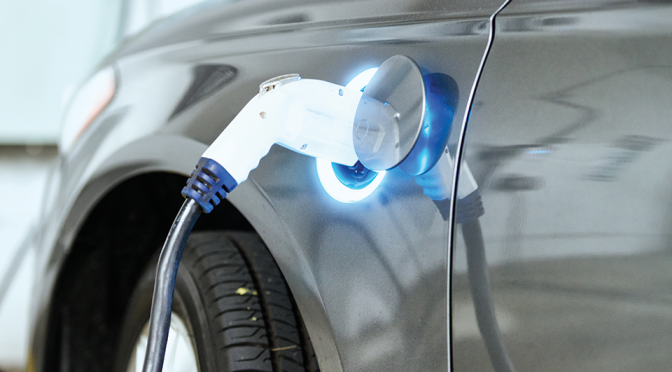For some of us autonomous cars and electric airplanes are the elements of our childhood cartoons. We wondered about, but could not really imagine the reality of, shooting around like the Jetsons. But as artificial islands and skylines of modern cities like Dubai become a reality, these innovations become more mainstream. While the basic technology of driverless cars and drones are becoming more and more common, researchers are still focused on addressing practical, and ultimately surmountable challenges, that go hand-in-hand with these innovations.
“It’s very much like the human body,” says UMKC associate professor and researcher Faisal Khan, Ph.D., of the batteries that power these technologies. “They can fail at any time.”
For the last six years, Khan has focused his research on monitoring Insulated Gate Bipolar Junction Transistors (IGBJT). These transmitters are an essential component of electric power conversion and are found in self-driving and hybrid cars, locomotives, nuclear ships and electric airplanes. While these transistors are critical to supplying energy at a controlled speed, they do break down. Currently, while every high-powered electronic circuit board needs one, there is no way to monitor the health and longevity of an IGBJT, the failure of which can have critical and costly consequences.
“This technology will allow us to determine when a car battery, for example, is about to run out. This allows you to make sure it doesn’t happen while you’re driving, but also allows you to get the last drop of use,” says Khan.
Khan has been interested in this technology for much of his career.
“I could see there was a void in this area,” he says. “Not many people were looking at it.”
Dr. Khan and his team recently received a $50,000 UM System Fast Track award to further his research. The Fast Track Awards are given by the University of Missouri Office of Academic Affairs, Research and Economic Development to support the development, testing, construction and analysis of innovative technology with the opportunity for commercial potential.
Khan, an expert in the field of determining the degradation in live power semiconductor aging and degradation, is confident his research will result in this sort of potential.
“For the last four or five years the data said it would work, but we couldn’t replicate it in the lab,” he says. “This is in the lab now. We are at the last level.”
The potential for this product is significant. In 2016, the worldwide IGBJT sales volume was $5.5 billion and has a steady 5-6 percent annual growth. An IGBJT driver will not work without a gate driver module. This gate driver controls the charge to the device from the power source. Often this essential driver can increase the cost of the IGBJT module by 30 percent.
The gate driver market is both essential and competitive. Currently, there is no health monitor available for these modules. Khan believes there is a place in the market for new products, and he is confident that a driver with a health-monitoring unit, such as the one he is developing, would be a market leader.
“The real-time health monitoring feature may eliminate system downtime,” Khan says.
In addition, he believes it can be incorporated into gate drivers without significant cost increase.
Once the technology, is tested Khan will submit the information to the UMKC Office of Technology Commercialization, and they will begin the process of licensing, selling and producing the technology.
While his research is both valuable and exciting, Khan’s satisfaction does not lie only with commercial success.
“My dream is that your electric car will monitor your battery, so there’s no surprise in the middle of the highway. What we want to do is save lives.”



